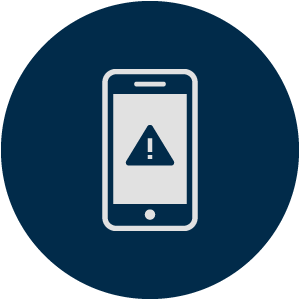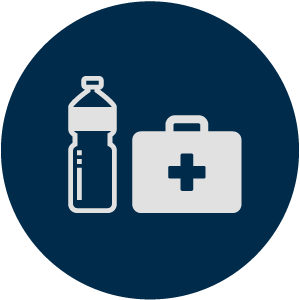
Be Prepared
Family Communication Plan
Make a plan today. Your family may not be together if a disaster strikes, so it is important to know which types of disasters could affect your area. Know how you’ll contact one another and reconnect if separated. Establish a family meeting place that’s familiar and easy to find.
Step 1: Put a plan together by discussing the questions below with your family, friends, or household to start your emergency plan.

Evacuation Routes
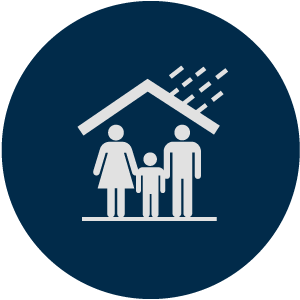
Shelter Plan
Step 2: Consider specific needs in your household.
As you prepare your plan, tailor your plans and supplies to your specific daily living needs and responsibilities. Discuss your needs and responsibilities and how people in the network can assist each other with communication, care of children, business, pets, or specific needs like operating medical equipment. Create your own personal network for specific areas where you need assistance. Keep in mind some these factors when developing your plan:
- Different ages of members within your household
- Responsibilities for assisting others
- Locations frequented
- Dietary needs
- Medical needs including prescriptions and equipment
- Disabilities or access and functional needs including devices and equipment
- Languages spoken
- Cultural and religious considerations
- Pets or service animals
- Households with school-aged children
Step 3: Fill out a Family Emergency Plan
Download and fill out a family emergency plan or use it as a guide to create your own.
Step 4: Practice your plan with your family/household
Preparedness Materials
Create Your Family Emergency Communication Plan
English | Additional Languages
Family Communication Plan Fillable Card
English | Additional Languages
Know Your Alerts and Warnings
English | Additional Languages
12 Ways to Prepare
English | Additional Languages
Document and Insure Your Property
English | Additional Languages
Safeguard Critical Documents and Valuables
English
Many emergencies and disasters occur without any warning. Since you can’t predict where you will be for disasters, it is important to have plans and supplies for the places you and your household go to regularly. Planning makes sure that you and your family will know what to do and have the supplies you need to be safe wherever you are.
Find out what plans are available for the locations you go regularly. Customize your personal and household plans based on what household members would do if an emergency occurred while they were at that location.
Plan by Location
Examples of locations to consider and plan for include:
- Home
- Workplace
- Vehicles (download the Commuter Emergency Plan)
- Regular methods of transportation such as trains, urban commuter transit
- School and daycare
- Places of worship
- Sports arenas and playing fields
- Entertainment locations such as theatres
- Shopping areas such as malls and retail centers
- Tourist and travel locations such as hotels
Additional Considerations
To develop a plan for different locations, you need to get important information about the organization or building managers’ plans. In some cases, if plans are not available, you may have to work with the building manager or other members of the organization to develop or build out plans. Consider the following:
- How to get local alert or warnings while you are there
- Building alarm or alert systems
- Building evacuation plans including alternate exits
- Building or organization shelter in place plans
- Supplies you would need for temporary sheltering
Consider how the type of building or the environment around the building may impact alerts and warnings, shelter and evacuation and the need for supplies. Examples include:
- Single story vs multi-story or high-rise buildings have different types of alarm systems, shelter, and evacuation considerations.
- Urban and rural locations may have different local assumptions and plans for evacuation if large areas are affected.
- Buildings like schools, sports arenas and malls may have different plans for evacuation and shelter depending on the specific building structure, or safe locations for shelter for different types of emergencies.
- Outdoor locations like sports fields or golf courses need specific plans for rapid short-term shelter (e.g., for thunderstorms and lightning or tornadoes).
- Geography may be critical for some hazards (e.g., if the area is low and vulnerable to flash flooding).
- Mobile homes, modular structures and other buildings not attached to permanent foundations require planning for evacuation and alternate shelter locations.

Neighborhoods, Condominiums and Apartments
- Talk to your neighbors about how you can work together during an emergency.
- Find out if anyone has specialized equipment like a power generator or expertise such as medical knowledge that might help in a crisis.
- Decide who will check on elderly or disabled neighbors.
- Make back-up plans for children in case you can’t get home in an emergency.
- Sharing plans and communicating in advance is a good strategy.

In a High-Rise Building
- Know where the closest emergency exit is.
- Know another way out in case your first choice is blocked.
- Take cover against a desk or table if things are falling.
- Move away from file cabinets, bookshelves or other things that might fall.
- Face away from windows and glass.
- Move away from exterior walls.
- Determine if you should stay put, shelter-in-place or get away.
- Listen for and follow instructions.
- Take your emergency supply kit, unless there is reason to believe it has been contaminated.
- Do not use elevators.
- Stay to the right while going down stairwells to allow emergency workers to come up.
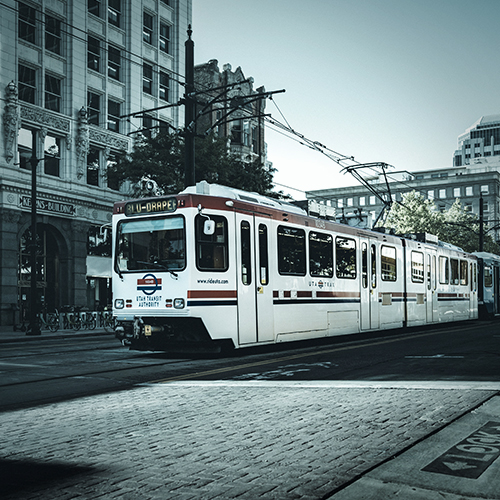
In a Moving Vehicle
- If there is an explosion or other factor that makes it difficult to control the vehicle, pull over, stop the car, and set the parking brake.
- If the emergency could impact the physical stability of the roadway, avoid overpasses, bridges, power lines, signs, and other hazards.
- If a power line falls on your car you are at risk of electrical shock, stay inside until a trained person removes the wire.
- Listen to the radio for information and instructions as they become available.
- Have a plan for traveling between work and home and other commonly visited locations in case of an emergency. Download the Commuter Emergency Plan.
Plan to Evacuate
Many kinds of emergencies can cause you to have to evacuate. In some cases, you may have a day or two to prepare while other situations might call for an immediate evacuation. Planning is vital to making sure that you can evacuate quickly and safely no matter what the circumstances.
Before an Evacuation
- Learn the types of disasters that are likely in your community and the local emergency, evacuation, and shelter plans for each specific disaster.
- Plan how you will leave and where you will go if you are advised to evacuate.
- Check with local officials about what shelter spaces are available for this year. Coronavirus may have altered your community’s plans.
- If you evacuate to a community shelter, follow the latest guidelines from the Centers for Disease Control and Prevention (CDC) for protecting yourself and your family from possible coronavirus: people over 2-years-old should use a cloth facial covering while at these facilities.
- Be prepared to take cleaning items with you like masks, soap, hand sanitizer, disinfecting wipes or general household cleaning supplies to disinfect surfaces.
- Maintain at least 6 feet of space between you and people who aren’t in your immediate family.
- Identify several places you could go in an emergency such as a friend’s home in another town or a motel. Choose destinations in different directions so that you have options during an emergency.
- If needed, identify a place to stay that will accept pets. Most public shelters allow only service animals.
- Be familiar with alternate routes and other means of transportation out of your area.
- Always follow the instructions of local officials and remember that your evacuation route may be on foot depending on the type of disaster.
- Come up with a family/household plan to stay in touch in case you become separated; have a meeting place and update it depending on the circumstance.
- Assemble supplies that are ready for evacuation. Prepare a “go-bag” you can carry when you evacuate on foot or public transportation and supplies for traveling longer distances if you have a car.
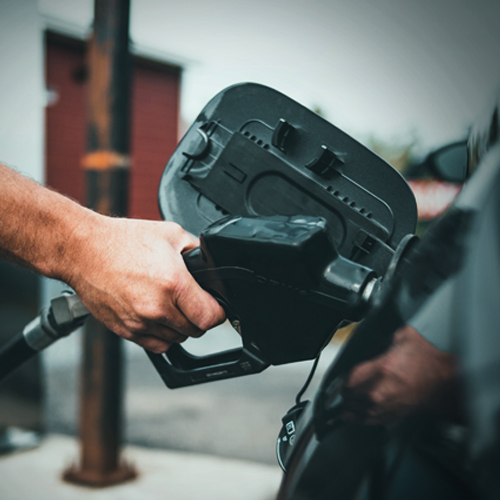 If you have a car:
If you have a car:- Keep a full tank of gas if an evacuation seems likely. Keep a half tank of gas in it at all times in case of an unexpected need to evacuate. Gas stations may be closed during emergencies and unable to pump gas during power outages. Plan to take one car per family to reduce congestion and delay.
- Make sure you have a portable emergency kit in the car.
- If you do not have a car, plan how you will leave if needed. Decide with family, friends, or your local emergency management office to see what resources may be available.
During an Evacuation
- Download the FEMA app for a list of open shelters during an active disaster in your local area.
- Listen to a battery-powered radio and follow local evacuation instructions.
- Take your emergency supply kit
- Leave early enough to avoid being trapped by severe weather.
- Take your pets with you but understand that only service animals may be allowed in public shelters.
- If time allows:
- Call or email the out-of-state contact in your family communications plan. Tell them where you are going.
- Secure your home by closing and locking doors and windows.
- Unplug electrical equipment such as radios, televisions, and small appliances. Leave freezers and refrigerators plugged in unless there is a risk of flooding. If there is damage to your home and you are instructed to do so, shut off water, gas and electricity before leaving.
- Leave a note telling others when you left and where you are going.
- Wear sturdy shoes and clothing that provides some protection such as long pants, long-sleeved shirts and a hat.
- Check with neighbors who may need a ride.
- Follow recommended evacuation routes. Do not take shortcuts, they may be blocked.
- Be alert for road hazards such as washed-out roads or bridges and downed power lines. Do not drive into flooded areas.
After an Evacuation
If you evacuated for the storm, check with local officials both where you’re staying and back home before you travel.
- If you are returning to disaster-affected areas, after significant events prepare for disruptions to daily activities and remember that returning home before storm debris is cleared is dangerous.
- Let friends and family know before you leave and when you arrive.
- Charge devices and consider getting back-up batteries in case power-outages continue.
- Fill up your gas tank and consider downloading a fuel app to check for outages along your route.
- Bring supplies such as water and non-perishable food for the car ride.
- Avoid downed power or utility lines, they may be live with deadly voltage. Stay away and report them immediately to your power or utility company.
- Only use generators outside and away from your home and NEVER run a generator inside a home or garage or connect it to your home’s electrical system.
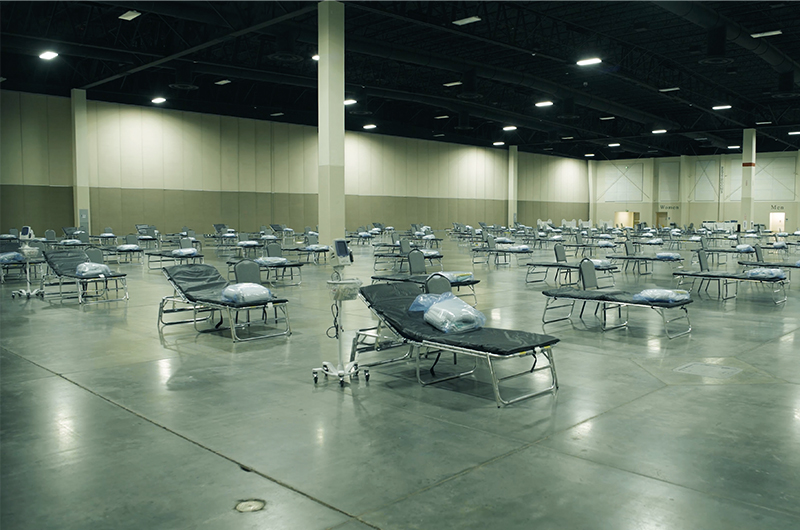
Sheltering is appropriate when conditions require that you seek protection in your home, where you work or other location when other emergencies arise. It is important that you stay informed and follow the instructions of local authorities.
During extended periods of sheltering, you will need to manage water and food supplies to make sure you and your family have what you need to get by.
Choosing to take shelter is necessary in many emergencies. This can mean: Stay-At- Home, going to a Mass Care Shelter, or Sheltering in Place. Here’s the distinction:
Stay-at-Home
- Remain indoors as much as possible and try to only leave your home when necessary. You can still use outdoor spaces such as patios, porches, and yards.
- Outdoor activities such as walking, jogging and exercise are fine if you practice social distancing (maintaining six feet away from the next person).
- When outside, try not to touch anything (light signals, poles, signs, playground equipment, benches, etc.) because the coronavirus can remain on certain surfaces for multiple hours.
- Essential services such as grocery shopping, the gas station, pharmacies and going to the Post Office are still fine to do.
- Limit visitors if possible. Try to use video chatting. Call the people you would normally text.
Mass Care Shelter
Mass care shelters provide life sustaining services to disaster survivors. Even though mass care shelters often provide water, food, medicine and basic sanitary facilities, you should plan to take your emergency supply kit with you so you will have the supplies you need. Mass care sheltering can involve living with many people in a confined space, which can be difficult and unpleasant.
- Check with local officials about what shelter spaces are available. Coronavirus may have altered your community’s plans.
- Be prepared to take cleaning items with you like masks, soap, hand sanitizer, disinfecting wipes or general household cleaning supplies to disinfect surfaces.
- Maintain at least 6 feet of space between you and people who aren’t in your immediate family.
Search for open shelters by texting SHELTER and a ZIP code to 43362. Example: Shelter 01234 (standard rates apply).
Learn more by visiting: http://www.disasterassistance.gov/.
Sheltering in Place
Whether you are at home, work or anywhere else you frequent regularly, there may be situations when it’s best to stay where you are and avoid any uncertainty outside.
Here are some indicators and steps to take if the situation arises:
- Use common sense and available information to assess the situation and determine if there is immediate danger.
- If you see large amounts of debris in the air, or if local authorities say the air is badly contaminated you may want to take this kind of action.
Here are some tips for sheltering in place:
- Local authorities may not immediately be able to provide information on what is happening and what you should do.
- Watch TV and listen to the radio or check the Internet often for official news and instructions as they become available.
- Bring your family and pets inside.
- Lock doors, close windows, air vents and fireplace dampers.
- Turn off fans, air conditioning and forced air heating systems.
- Take your emergency supply kit unless you have reason to believe it has been contaminated.
- Go into an interior room with few windows if possible.
- Seal all windows, doors and air vents with thick plastic sheeting and duct tape. Consider measuring and cutting the sheeting in advance to save time.
- Cut the plastic sheeting several inches wider than the openings and label each sheet.
- Duct tape plastic at corners first and then tape down all edges.
- Be prepared to improvise and use what you have on hand to seal gaps so that you create a barrier between yourself and any contamination.
“Sealing a room” is considered a temporary protective measure to create a barrier between you and potentially contaminated air outside. This type of sheltering in place requires pre-planning, by purchasing plastic sheeting and duct tape that you would keep in your emergency supply kit.
